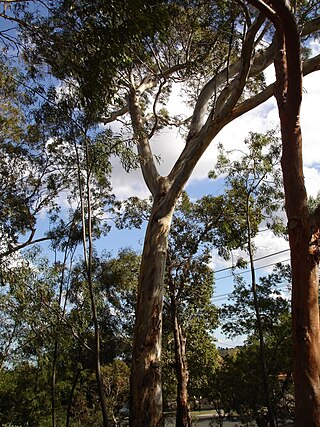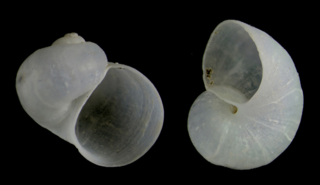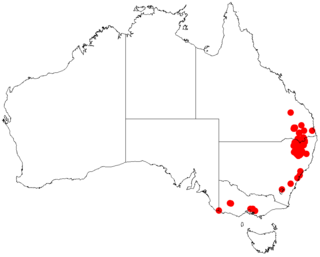
Jerome Seymour Bruner was an American psychologist who made significant contributions to human cognitive psychology and cognitive learning theory in educational psychology. Bruner was a senior research fellow at the New York University School of Law. He received a BA in 1937 from Duke University and a PhD from Harvard University in 1941. He taught and did research at Harvard University, the University of Oxford, and New York University. A Review of General Psychology survey, published in 2002, ranked Bruner as the 28th most cited psychologist of the 20th century.

A planthopper is any insect in the infraorder Fulgoromorpha, in the suborder Auchenorrhyncha, a group exceeding 12,500 described species worldwide. The name comes from their remarkable resemblance to leaves and other plants of their environment and that they often "hop" for quick transportation in a similar way to that of grasshoppers. However, planthoppers generally walk very slowly. Distributed worldwide, all members of this group are plant-feeders, though few are considered pests. The infraorder contains only a single superfamily, Fulgoroidea. Fulgoroids are most reliably distinguished from the other Auchenorrhyncha by two features; the bifurcate (Y-shaped) anal vein in the forewing, and the thickened, three-segmented antennae, with a generally round or egg-shaped second segment (pedicel) that bears a fine filamentous arista.

Eucalyptus leucoxylon, commonly known as yellow gum, blue gum or white ironbark, is a species of small to medium-sized tree that is endemic to south-eastern continental Australia. It has smooth yellowish bark with some rough bark near the base, lance-shaped or curved adult leaves, flower buds in groups of three and cylindrical, barrel-shaped or shortened spherical fruit. A widely cultivated species, it has white, red or pink flowers.

Judith "Judy" Neuffer Bruner was an American naval aviator and NASA manager.
The 1949 Chicago White Sox season was the White Sox's 49th season in the major leagues, and their 50th season overall. They finished with a record of 63–91, good enough for sixth place in the American League, 34 games behind the first place New York Yankees.

Acronicta pruinosa is a moth of the family Noctuidae. It is found in Sri Lanka, the Himalaya, east to Japan and Taiwan south to Myanmar and Peninsular Malaysia, Borneo, Java and New Guinea.

Acanalonia is a genus of planthopper in the fulgorid family Acanaloniidae.

Raphitoma pruinosa is a species of sea snail, a marine gastropod mollusk in the family Raphitomidae.

Dikoleps pruinosa is a minute species of sea snail, a marine gastropod mollusk in the family Skeneidae.

Granigyra pruinosa is a species of sea snail, a marine gastropod mollusk, unassigned in the superfamily Seguenzioidea.

Flatidae are a family of fulgoroid planthoppers. They are cosmopolitan in distribution and are distinguished from others in the superfamily by a combination of characters. Like all other planthoppers, they suck phloem sap of plants. Some species are known to communicate with vibrations through the plant stems. Communication may be with mates, or with ants that tend the nymphs, protecting them and gathering honeydew secretions. Adults of some species have brightly coloured forewings which are tougher and known as tegmina unlike the membranous hindwings which are used for flight. Although a few can be identified by their coloration, most species requires dissection and examination under a microscope with access to literature on already described species.

Ayenia limitaris is a rare North American species of flowering plant in the mallow family known by the common names Rio Grande ayenia, Texas ayenia, and Tamaulipan kidneypetal. It is native to an area straddling the Rio Grande in Mexico and the United States. Today it is known from far southern Texas and far northern sections of the Mexican states of Coahuila and Tamaulipas. It has become rare because most of its habitat has been degraded or destroyed. There are perhaps four populations remaining in Texas and two in Mexico, for a total of 1000 individual plants at most. It is a federally listed endangered species of the United States.

Metcalfa pruinosa, the citrus flatid planthopper, is a species of insect in the Flatidae family of planthoppers first described by Thomas Say in 1830.

Margarella pruinosa is a species of sea snail, a marine gastropod mollusk in the family Calliostomatidae.

Eucalyptus pruinosa, commonly known as silver box, silver leaf box, apple box or smoke tree, is a species of tree or a mallee that is endemic to northern Australia. The Jaminjung peoples know the tree as yarrirra or jarnbiny, the Jaru as wararn and the Wagiman as wararn. It has rough, fibrous to flaky bark on the trunk and branches, a crown composed of juvenile, glaucous, heart-shaped to broadly elliptical leaves arranged in opposite pairs, flower buds arranged in groups of seven on the ends of branches, creamy white to pale yellow flowers and cylindrical to conical fruit.

Acacia pruinosa, commonly known as the frosty wattle, is a species of Acacia native to eastern Australia.

Cicadellini is a tribe of leafhoppers in the family Cicadellidae. There are over 300 genera and several thousand described species in Cicadellini.
Pelitropis is a genus of tropiduchid planthoppers in the family Tropiduchidae. There are about five described species in Pelitropis.

Corybas pruinosus, commonly known as the toothed helmet orchid, is a species of terrestrial orchid endemic to New South Wales. It grows in moist forests and has a single round or heart-shaped leaf and a relatively small, translucent grey flower with dark red markings.

The Flatinae are a subfamily of planthoppers, erected by Maximilian Spinola in 1839. Genera have been recorded from all continents except Antarctica: especially in tropical and subtropical regions.

















